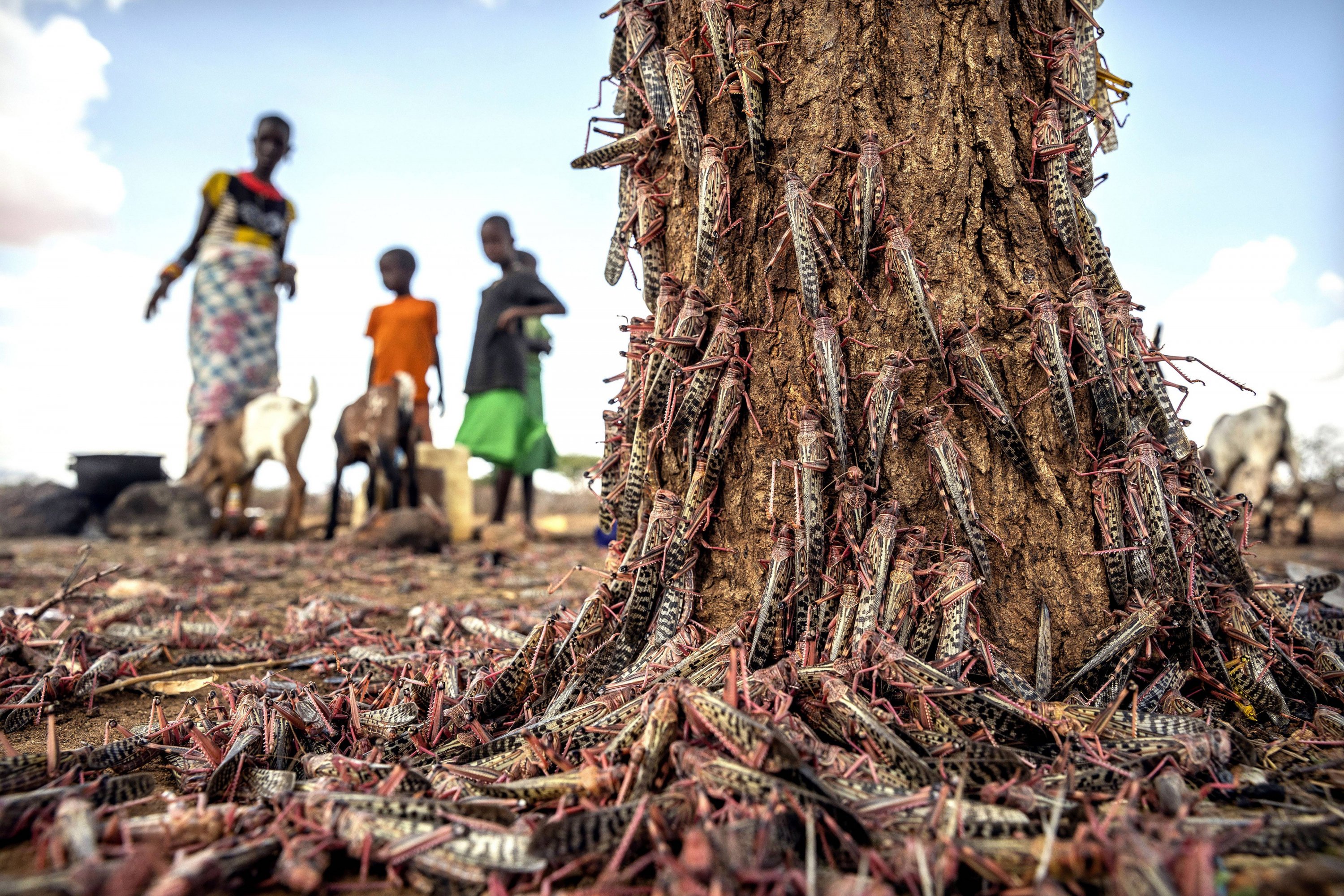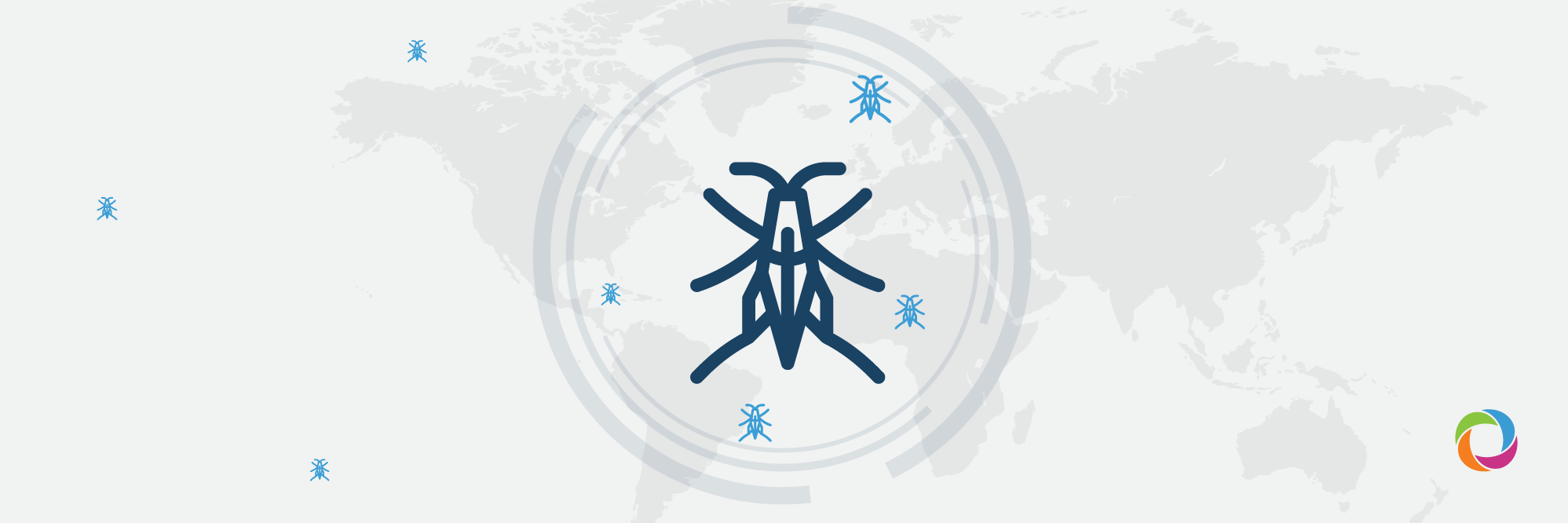Already fragile regions affected by poverty, food insecurity, unprecedented levels of humanitarian needs, violence, and displacement are now facing one of the worst surges in locust invasions in decades. Millions of people who struggle to feed themselves are fighting the ravenous insects that destroy everything in their path. Many more people may experience severe food insecurity due to desert locusts alone, a reality worsened by the burden of the pandemic.
With swarms that can move up to 150 kilometers in a day and are able to consume the same amount of food as 35,000 people, many governments will probably find it difficult to respond to such a large-scale crisis on their own. Desert locusts have wreaked havoc in Kenya, Ethiopia, Uganda, Somalia, Eritrea, India, Pakistan, Iran, Yemen, Oman and Saudi Arabia. Favorable weather conditions have resulted in locusts breeding in huge numbers bringing resultant massive destruction in the wider East Africa region. The spread of locusts threatens the food security of 24 million people who already suffer from food insecurity and puts at risk the livelihoods of another 8 million internally displaced people thereby pushing people further into poverty.
Countries experiencing a dramatic crisis
Ethiopia and Somalia continue to report the devastation of sorghum and maize crops and swarms of locusts have severely affected East African regions with the prospects of countries such as Chad, Niger, Mali and Mauritania also being invaded by the inspects becoming more and more realistic. So far, rains have unfortunately kept the locusts in East Africa leaving countries in the west free of the insects. The last crisis that swept West Africa in 2003 – 2005 put more than 8 million people in danger, caused severe food shortages and a spike in market prices although assessments by experts indicated that these losses could have been preventable. A better and speedier response leading to losses being reduced by 10% could have saved some US$226 million worth of crops whereas the costs to end the 2003-2005 plague amounted to approximately $450 million and $2.5 billion in crop damage.

Joined efforts to fight against the plague
In an attempt to prevent a locust invasion in West Africa and the Sahel and a further drop in food security for millions of people, the Food and Agriculture Organization (FAO) and governments should channel their attention towards providing the pesticides needed to stop swarms in their tracks. If conditions become favorable for the insects to move westward, countries in that region will need to have the pesticides on hand to prevent the devastating impacts of the plague. In the light of the disruptions to supply chains due to the pandemic and the high demand for products to fight locust invasions in East Africa and Southwest Asia, replenishing the stocks of pesticides would appear to be a difficult task.
The FAO and its regional locust control commission in the Western region implement the pesticide triangulation strategy which involves countries in moving stocks from low-risk countries to those at a higher risk within the region. So far, Algeria and Morocco have made around 90,000 liters of pesticides available which can be used for ground or air operations in countries such as Chad, Mali, Mauritania and Niger. Without a concerted combined effort, thousands of acres of farmland are at risk of being destroyed. In addition to the countries mentioned above, Burkina Faso, Cameroon, the Gambia, Nigeria and Senegal may also face food insecurity and, in view of the risk of locust infestation there, the FAO and its partners intend to survey some 10 million ha of land and target 300,000 to 500,000 ha with control operations.

Witnessing the second wave of the plague
According to the FAO, from the beginning of January 2020, monitoring and response capabilities successfully prevented around 500 billion locusts from damaging crops and rangelands although the first wave of desert locusts wiped out 70,000 ha of farmland in Somalia and Ethiopia and 2,400 km of pasture land in Kenya.
The situation continues to be desperate not only for high-risk countries but also for regions fighting the second generation of desert locusts. Kenya, a country which has not seen desert locusts for more than 70 years, was infested in February and is now managing a similar crisis again. Being invaded by a second breeding generation, Ethiopia is at risk of being affected by new swarms arriving from Yemen. Sudan and western Eritrea could also experience summer locust breeding. Despite efforts to halt the plague, such a battle could continue until the end of the year.
The World Bank (WB) has offered US$500 million to support countries in Africa and the Middle East affected by the locust outbreak. The WB financing program was designed to meet people’s immediate needs through cash transfers and various social protection measures and by restoring food production and livelihoods as well as, strengthening national surveillance to mitigate future crises.
To stay informed about the latest global development news subscribe to DevelopentAid Newsletter and gain access to the latest information. You can also become a DevelopmentAid member and contribute with expertise in your own field.
Discover the available funding opportunities and the ongoing international projects aimed at fighting the locusts on developmentaid.org.

